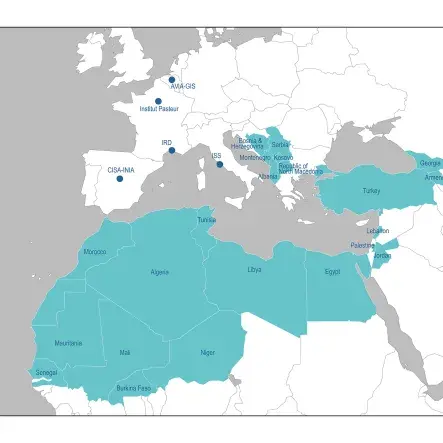
Laboratory Preparedness and Response capacities
What is Preparedness?
According to WHO*, “emergency preparedness is a continuous process in which action, funding, partnerships, and political commitment at all levels must be sustained. It relies on all stakeholders working together effectively to plan, invest in and implement priority actions. A common, efficient, coordinated multisectoral approach, comprising all-hazard and hazard specific measures, is needed to ensure preparedness for all types of emergencies”.
It aims to minimise the risks and to mitigate the impact of communicable diseases during a public health emergency, regardless of the scale of the event (national, regional, global). This requires capacities and capabilities for effective planning, coordination, early detection, assessment, investigation, response to, and communication in public health emergencies.
How does MediLabSecure contribute to strengthen the preparedness of its 22 participating countries?

At MediLabSecure, we support human and animal laboratories, public health, and veterinary services to detect and identify priority emerging vector-borne diseases, and to alert if needed. Because we are focusing on health threats spread by mosquitoes and ticks, we also enhance national capacities on entomological identification, mapping, and control.
More concretely, we:
- train and assess staff in human and animal virology laboratories on the identification of relevant emerging arborviruses,
- train laboratory and field staff in entomology on vector identification, control, georeferenced data sampling and mapping,
- provide support in case of emerging epidemic threats,
- evaluate, harmonize, and transfer techniques related to the diagnosis of vector-borne viruses and new emerging threats or to the identification and control of vectors,
- train human and animal health experts to detect and timely respond to an outbreak,
- put into practice the knowledge gained by the MediLabSecure experts from all sectors through multisectoral activities and exercises,
* WHO, Framework for Public health Emergency Operations Center 2015 and A strategic framework for emergency preparedness 2017